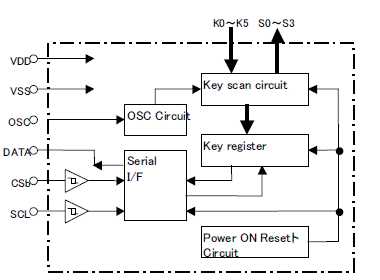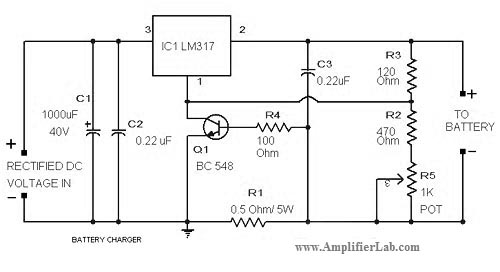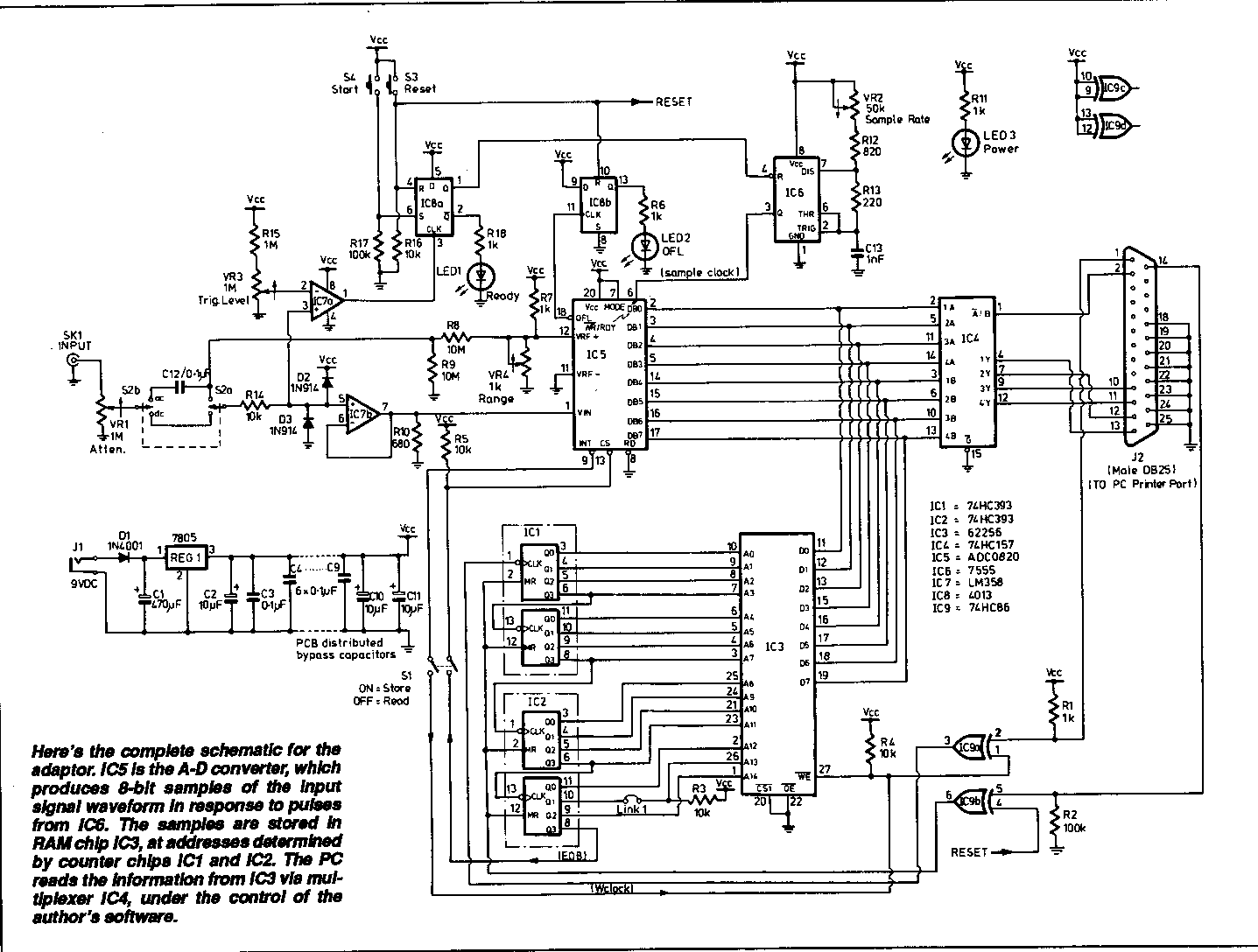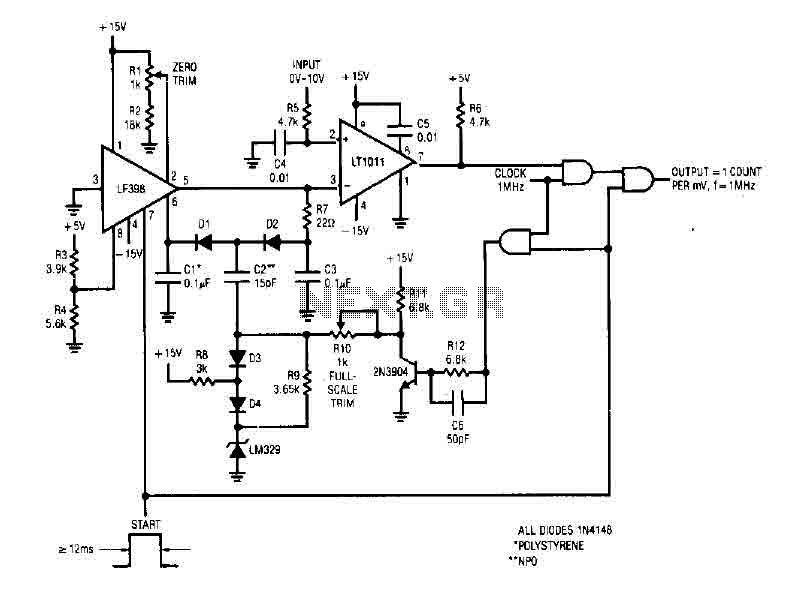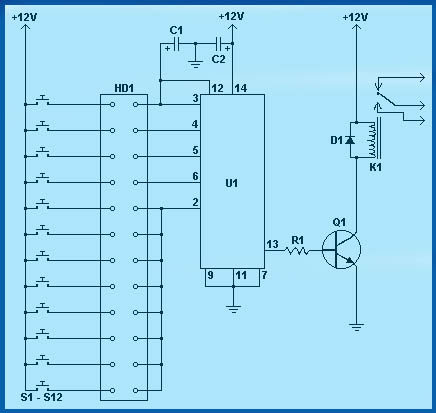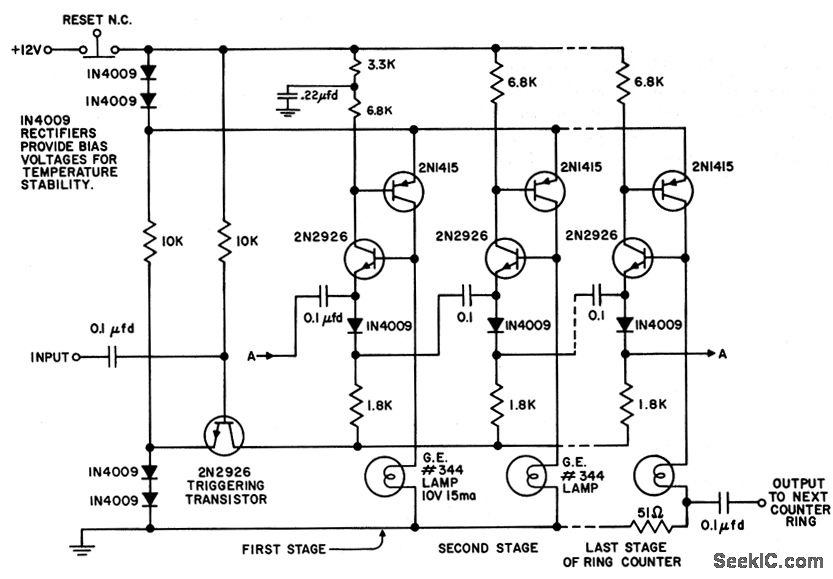
simple digital counter by

The fundamental digital circuits include Flip-Flops and Counters, both of which are present in this design. This circuit can be cascaded to create a six-digit event counter, and a simple frequency counter can also be constructed. Modern implementations are typically achieved using microcontrollers. In instances where a custom microcontroller is to be designed on an FPGA, a solid understanding of basic components such as gates, flip-flops, and counters is essential. The DIP switch can be configured as desired, followed by pressing the Set button. The BCD (Binary-Coded Decimal) value will be available at the output of the 4029 IC, while the decimal equivalent will be displayed on a seven-segment display. Users can experiment with various DIP switch settings to observe changes in BCD and decimal outputs. Pressing the Clk (clock or count) button will latch the switch; pressing it again will release it. A single toggle of the switch will send a pulse to the counter, incrementing the count, which can be observed on the BCD and decimal displays. When activated, the counter will continue to increment once per second until it is turned off, as the clock NAND gate is configured as an oscillator. It is advisable to connect a 0.1 µF ceramic disc capacitor across the supply pins of all integrated circuits (ICs). Additionally, a 0.1 µF capacitor should be placed across the Increment switch and another across the Set switch to establish power-on default settings.
The circuit design integrates essential digital components, including flip-flops and counters, to facilitate event counting and frequency measurement. The use of a 4029 BCD counter IC allows for efficient binary-coded decimal output, which is crucial for applications requiring numerical display. The seven-segment display provides a user-friendly interface for visualizing the decimal output, enhancing usability.
The configuration of the DIP switch enables users to set specific values, which are then processed by the counter. The incorporation of a clock pulse generator, realized through a NAND gate oscillator, ensures that the counter operates continuously at a defined frequency until manually interrupted. This feature is particularly useful for applications requiring real-time counting.
Capacitors are strategically placed throughout the circuit to stabilize power supply voltages and filter out noise, which is critical for maintaining the integrity of digital signals. The 0.1 µF ceramic capacitors serve to decouple the power supply from transient spikes, thereby enhancing the reliability of the circuit during operation.
Overall, this design exemplifies a practical approach to digital counting applications, showcasing the integration of fundamental electronic components with an emphasis on stability and user interaction.The basic digital circuits are Flip Flop and Counter, both are here. This circuit can be cascaded to make even a 6 digit event counter, even a simple frequency counter can be made. These are best done with microcontrollers today. Then what if you have to design your own microcontroller on a FPGA, so the basics have to be sound, hence you have to k
now what gates, flip flops and counters are. a. Set the DIP Switch as you like and then Press the Set button. The BCD value will be at the 4029 output, The Decimal value will be seen in the seven segment Display. Now try for different dip switch settings and see the BCD and Decimal output. c. Now Click the Clk - clock or count button, the switch will latch, press it again to release. If you toggle it once the counter will get a single pulse and it will count it, see the BCD and decimal displays.
Now you turn it on and leave it, the counter will keep counting one per second till you turn it off, the clock nand gate is wired to be an oscillator. Add 104 CD, 0. 1uF ceramic disc cap to all the ICs across the supply pins. Also add a 104 CD cap across Inc switch and one across the Set switch for power on default settings 🔗 External reference
The circuit design integrates essential digital components, including flip-flops and counters, to facilitate event counting and frequency measurement. The use of a 4029 BCD counter IC allows for efficient binary-coded decimal output, which is crucial for applications requiring numerical display. The seven-segment display provides a user-friendly interface for visualizing the decimal output, enhancing usability.
The configuration of the DIP switch enables users to set specific values, which are then processed by the counter. The incorporation of a clock pulse generator, realized through a NAND gate oscillator, ensures that the counter operates continuously at a defined frequency until manually interrupted. This feature is particularly useful for applications requiring real-time counting.
Capacitors are strategically placed throughout the circuit to stabilize power supply voltages and filter out noise, which is critical for maintaining the integrity of digital signals. The 0.1 µF ceramic capacitors serve to decouple the power supply from transient spikes, thereby enhancing the reliability of the circuit during operation.
Overall, this design exemplifies a practical approach to digital counting applications, showcasing the integration of fundamental electronic components with an emphasis on stability and user interaction.The basic digital circuits are Flip Flop and Counter, both are here. This circuit can be cascaded to make even a 6 digit event counter, even a simple frequency counter can be made. These are best done with microcontrollers today. Then what if you have to design your own microcontroller on a FPGA, so the basics have to be sound, hence you have to k
now what gates, flip flops and counters are. a. Set the DIP Switch as you like and then Press the Set button. The BCD value will be at the 4029 output, The Decimal value will be seen in the seven segment Display. Now try for different dip switch settings and see the BCD and Decimal output. c. Now Click the Clk - clock or count button, the switch will latch, press it again to release. If you toggle it once the counter will get a single pulse and it will count it, see the BCD and decimal displays.
Now you turn it on and leave it, the counter will keep counting one per second till you turn it off, the clock nand gate is wired to be an oscillator. Add 104 CD, 0. 1uF ceramic disc cap to all the ICs across the supply pins. Also add a 104 CD cap across Inc switch and one across the Set switch for power on default settings 🔗 External reference
Warning: include(partials/cookie-banner.php): Failed to open stream: Permission denied in /var/www/html/nextgr/view-circuit.php on line 713
Warning: include(): Failed opening 'partials/cookie-banner.php' for inclusion (include_path='.:/usr/share/php') in /var/www/html/nextgr/view-circuit.php on line 713
